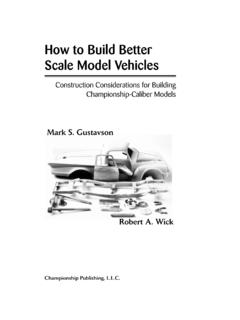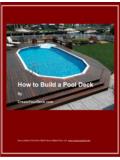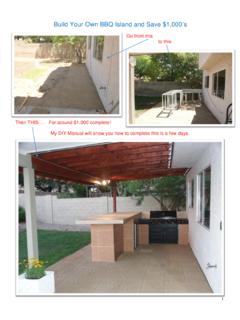Transcription of A LAndLord’s duty to MitigAte in texAs: What If You Build ...
1 A landlord s duty to MitigAte in texAs: What If You Build It, and They Don t Come?1 By Kent ALtsuLer when the tenant vacates in breach of the lease; and(3) the landlord is not required to simply fill the premises with any willing tenant; the replacement tenant must be suitable under the Opinions Issued Since Austin Hill CountryAfter Austin Hill Country the ques-tion remained: Is an abandonment of the premises necessary for the mitigation duty to kick in? Some decisions since Austin Hill Country glossed over the abandonment pre-condition in Section In Western Skies Partnership/Physi-cian s Healthcare Assocs.
2 , v. Phy-sician s Healthcare Assocs., , a dis-pute arose over a commercial The lease was signed by Western Skies (the landlord ) and PHA (the tenant) on March 15, 1994. Because the property needed remodeling, PHA was not obligated to occupy the premises until 120 days after the premises became available. Western Skies did not hire anyone to do the improvements until April 27, 1994. In May 1994, Western Skies sus-pected that PHA was not going to move into the premises, and in July 1994, the broker informed Western Skies that PHA indeed was not going to occupy the premises.
3 To replace PHA, the broker presented a pro-posal from a Kenny Rogers Roasters franchise to sublease the premises. Instead, Western Skies entered into a new lease with SouperSalad and then filed a lawsuit to recover dam-ages caused by PHA s breach. The jury found that both sides breached and did not award any damages. On appeal Western Skies argued that the trial court erred in admitting ev-idence of mitigation because it was irrelevant. As an extension of this argument, Western Skies argued that the following jury instruction Court opinion that provoked the pas-sage of Section In that litiga-tion, Palisades owned and operated an office complex.
4 Austin Hill Coun-try executed a five-year lease, which was originally estimated to begin on November 15, 1992; but construc-tion came to a halt on October 21, 1992 when Palisades received con-flicting instructions about the com-pletion of the suite. After the parties tried to resolve their differences, Palisades sued Austin Hill Country for anticipatory breach of the lease. At trial the latter attempted to prove that Palisades failed to MitigAte the damages resulting from Austin Hill Country s breach by rejecting other offers to lease the premises.
5 Pali-sades won the trial. The court of ap-peals affirmed. On appeal to the texas Supreme Court, Austin Hill Country sought the recognition of a landlord s duty to make reasonable efforts to MitigAte damages when a tenant breaches a lease. The court began its analysis by acknowledging that the traditional common law rule dictated that land-lords have no duty to MitigAte . texas adopted the rule in 1897. Since then texas courts have consistently fol-lowed the no-mitigation rule in cases involving past rent. But some texas courts required a landlord to MitigAte when he sought a remedy that was contractual in nature (like anticipatory breach), or when he re-entered the premises.
6 Recognizing that a lease possesses elements of both a contract and a conveyance, and that public policy justifies the duty to MitigAte , the court held the following:(1) a landlord has a duty to make reasonable efforts to MitigAte dam-ages when the tenant breaches the lease and abandons the property;(2) the landlord s duty to MitigAte requires him to use objectively rea-sonable efforts to fill the premises A. Introduction and TEX. PROP. CODE is no doubt that in texas a landlord has the duty to MitigAte his or her damages when the tenant breaches and abandons.
7 texas Prop-erty Code provides:(a) A landlord has a duty to miti-gate damages if a tenant abandons the leased premises in violation of the lease.(b) A provision of a lease that pur-ports to waive a right or to exempt a landlord from a liability or duty under this section is To abandon a place, one must But what happens if a com-mercial tenant does not technically abandon the leased premises, and instead never shows up in the first place?Let s say, for example, a shopping center has a signed long-term lease with a big-box retail anchor tenant.
8 The shopping center developer has already spent a great deal of time and money on design, construction, and negotiations with the city. But right after the structure is built, the tenant informs the landlord that it is not coming, stocking the shelves, staffing up, or opening the store. This is an obvious default under the lease and a breach of the standard clause obligating the tenant to open for business for at least one day. But what is the proper measure of dam-ages for the landlord ? Can the land-lord argue that he or she has no duty to MitigAte because the tenant never took possession in the first place?
9 B. Austin Hill CountryNo texas case squarely covers this issue. To answer these questions one must piece together (1) language from the above-quoted statute and (2) the results of cases that involve slightly different scenarios. The starting point is Austin Hill Country, the seminal texas Supreme The Houston Lawyer magazine (www. ) July/August 2011 GFIC from its mitigation duty , or al-ter the court s , the most helpful case on this topic may be Broken Spoke Club, Inc. v. There, Butler (the landlord ) agreed to lease the sub-ject premises to the operators of the Broken Spoke Saloon for three years.
10 The term was supposed to run from February 1998 through January 31, 2001. Although the tenant did occu-py the premises from 1998 to 2000, Broken Spoke still offers guidance because the saloon did not breach and abandon in the normal fashion: the building burned down. Much of the opinion discusses the amount of offset the tenant was entitled to in light of rent received from substitute lessees during the term of the origi-nal lease, as opposed to whether the tenant is entitled to a mitigation offset at all. This is telling because nowhere in the decision does Justice Gardner, who cites both Austin Hill Country and Section , relieve Butler from the obligation to miti-gate.








